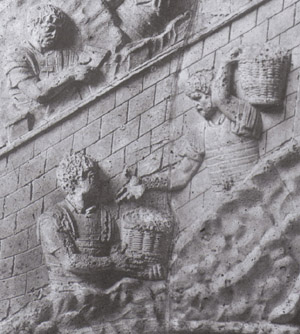In addition to their weapons, wrote Flavius Josephus in the late first
century, Roman infantry on campaign carried ‘saw and basket, axe
and pick, as well as strap, reaphook, chain, and three days’ rations,
so there is not much difference between a soldier and a pack-mule’.
Active service involved sustained and gruelling work: fighting was usually
a rare event. A wide swath of ground had to be cleared in front of the
advancing army; rivers had to be forded or bridged; swamps safely negotiated.
Each night, a camp had to be built.
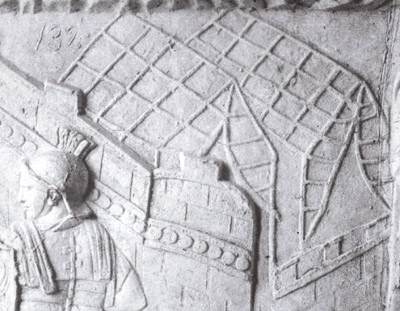
Campaign tents made up of leather panels,
a detail from Trajan's Column.
© Author's collection
Surveyors went ahead of the army to choose the camp site and mark out
its perimeter. When the main body arrived each man knew exactly what he
had to do: some mounted guard, some constructed prescribed sections of
the ditch and rampart, some pitched tents, some looked after the animals,
some gathered water and firewood, and some prepared a meal for themselves
and their comrades.
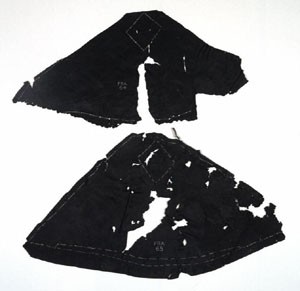
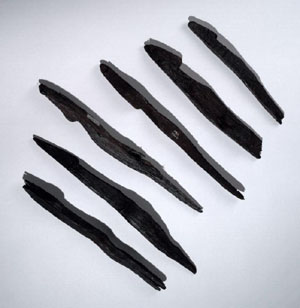
Leather tent panels from
Newstead.
© SCRAN/National Museums of Scotland
Wooden tent-pegs from
Newstead.
© SCRAN/National Museums of Scotland
Each contubernium or eight-man section was provided with a leather
tent. Fragments of these, and wooden tent-pegs, have been found at Newstead
and elsewhere. Ten such tents, set in a row with a space in front of each
for weapons, baggage, and a pack-mule, made up a century. A larger tent
at the end housed the centurion and his staff. Centuries and cohorts were
arranged in much the same way as in permanent forts. Other tents were
provided for specialist staff and a large marquee was placed in the centre
of the camp for the army commander.
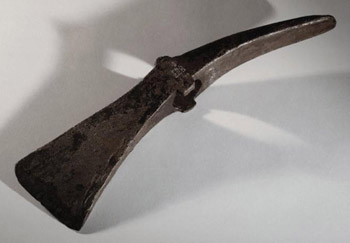
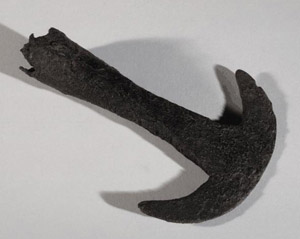
Much activity in the field involved building roads,
bridges, and forts. Most of this work was done by legionaries.
Their main tools were the dolobra (pickaxe) (above left), the
turf-cutter (above right), the shovel, and the basket. With little more
than these simple tools legionary craftsmen could build a fortress such
as Inchtuthil or a frontier like the Antonine Wall.
above, left and right ©
SCRAN/National Museums of Scotland
right © Author's collection
